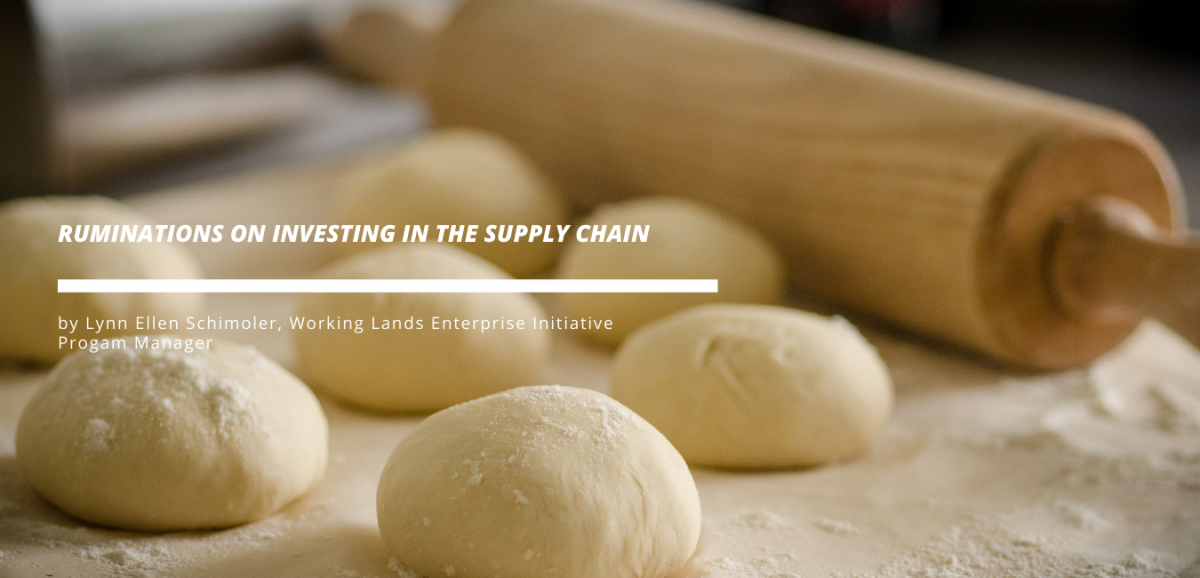
By Lynn Ellen Schimoler, VT Agency of Agriculture, Food, and Markets & WLEI Program Manager
Tracking my daily steps is something I enjoy, so on a recent visit to one of my favorite food stores I parked near the loading dock to get a few extra steps in. As I made my way to the door, I noticed a vendor carefully don their gloves and mask and begin to unload freshly baked bread. If I slowed my gait and timed it well, I just might get a loaf before they even landed on the sales floor.
The myriad steps and systems in a Vermont supply chain tested by the pandemic gave me pause and questions began to arise. During the last 9 months, it was a challenge to find this bread. My stream of consciousness continued. What had shifted during that time to disrupt and transform the baker’s roadmap? New partnerships likely formed because of the bumpy, stressed supply chain. Perhaps the baker was sourcing her flour closer to her bakery? Perhaps her delivery staff lost their childcare which shifted the baker’s role to also become her own delivery driver also responsible for securing her own accounts. Maybe the baker-turned-delivery driver now had more time to brainstorm her business plan while on the road and has been thinking about partnerships and growth to strengthen her place in the chain. Perhaps she was now providing bread to the meat producer busy with diversifying their online sales. Did this mean less loaves were getting to my favorite market? Or perhaps that there was more exposure to her bread because of a glut of new enthusiastic eaters?
Ultimately, my list did not include the bread that evening, but I did grab my beloved Dreamwalker Farm eggs and some flour to add to the food shelf bin at the exit. Arriving home after enduring long, safely-distanced lines in the store, my mind returned to supply chain and the necessity for flexibility. My imaginary story about the baker and her business plan pushed me to embrace the origins and coordination of my groceries, once again mentally linking all of the steps along the way.
This mulling weaves into my work as the Working Lands Program Manager in a year where, due to limited funds, the Working Lands Enterprise Grants will focus solely on Supply Chain Impact grants. We hope to mitigate the fragility of the system by supporting players along the supply chain as they build new relationships and leverage existing partnerships. When this is successful, we see product development, the attainment of new markets, and a willingness to take the steps while tracking them along the way with patience and planning.
The Working Lands Enterprise Board will fund grants that demonstrate how the project will positively impact multiple businesses, or have supply chain impacts, akin to the story of this baker. Grant awards are $25,000-$75,000 and first round applications are due December 6th. In the meantime, I look forward to reviewing the FY21 WLEF Supply Chain Impact projects and tracking my steps while ruminating about farms, forests, and food in my kitchen.
If you still need inspiration for a project, take a look at last year’s projects or visit the Working Lands Enterprise Initiative for more information. To apply, read the FY21 WLEF Supply Chain Impact Business Grants Pre-Application and follow included instructions.
